Chemistry in the sea and on the beach. We pollute the oceans globally and poison ourselves locally
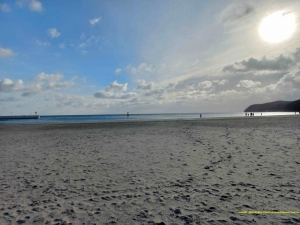
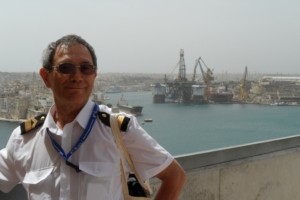 By Marek Grzybowski
By Marek Grzybowski
Recently, experts met in Tokyo and debated how to eliminate sea pollution from chemical waste. The conference aimed to gather the latest information, raise awareness and establish policy recommendations to improve the quality of knowledge about polluted oceans and data on chemical pollution.
It turns out that in the case of chemical pollution of seas and oceans, the 80:20 rule applies. – Most marine chemical pollution originates on land, approximately 80% compared to 20% that originates in the sea – according to The Invisible Wave report by Back to Blue. Chemicals reach the sea with water, and the main sources of supply are rivers and lakes. From watersheds, chemical waste reaches the ocean directly or indirectly.
Plastics in the ocean
– The use of plastics will continue to grow, leading to a 50% increase in the impact of (macro)plastics into the environment by 2040. The business produces 30 million tons [plastic products – MG] per year, of which 9 million tons will enter the aquatic environment . The growing use of plastics and the amount of waste would intensify the adverse effects on the environment, climate and health, warn experts in the latest OECD report Towards Eliminating Plastic Pollution by 2040.
– Plastic pollution poses an increasing threat to the environment, impacting [fauna, bird and human] habitats and natural ecosystems, with consequences for sustainable economic growth and human well-being, says Jo Tyndall, OECD Environment Director, in the introduction to the report.
Tyndall believes that as discussions continue to develop an international, legally binding treaty to combat plastic pollution, further information is needed to help inform the decision-making process.
Tyndall raises important questions: What level of policy stringency should be applied across the plastics lifecycle to achieve the goal of most effectively eliminating plastic pollution in the oceans? What are the benefits and complexities of pursuing the 2040 goal of ending plastic pollution, and what are the consequences of delaying action?
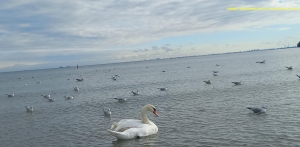
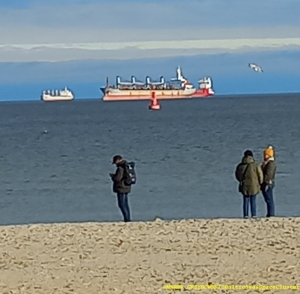
Actions still uncoordinated
According to OECD experts, a scenario assuming bottom-up, uncoordinated political actions by countries may slow down the increase in plastic consumption.
However, observations of countries’ actions show that by 2040, the consumption of plastics and the amount of waste will still increase by over 50% compared to the level in 2020. Despite the popularization of waste recycling, by 2040 23 million tonnes of chemicals will still be released into the environment.
The OECD optimistically assumes that if early, rigorous and coordinated policy action were taken, plastic waste generation could be reduced by a quarter in 2040 compared to the baseline. The authors of the Towards Eliminating Plastic Pollution by 2040 report believe that improper waste management can be practically eliminated from 119 million tons to 4 million tons by 2040.
However, plastics in rivers and oceans cannot be avoided. Their numbers will continue to grow. Scientists estimate that they will increase from 152 million tons in 2020 to 226 million tons in 2040. If society’s actions to protect the environment are effective, there will be 74 million tons less chemicals than in the base scenario.
During the event organized this year Back to Blue, the Economist Impact initiative and The Nippon Foundation discussed the possibilities of reducing chemical pollution. The debate was held in the context of the UN Decade of Ocean Sciences for Sustainable Development.
“We are all connected by the ocean, so [chemical pollution – MG] is a global problem that needs to be addressed both locally and globally,” said Frida Hok, deputy director of the International Chemical Secretariat.
Three goals in the fight against chemistry
Back to Blue is working to achieve these ambitions through three goals. The first is to inform people and build a base of research and evidence that will inform conversations with stakeholders and decision-makers. The second is to engage the global community, including civil society, scientists, economists and industry. The third is to ultimately support change and progress.
It is therefore about broad education and combating ignorance about the world’s connections with the ocean and supporting a new appreciation for the importance of the ocean and its vulnerability to the effects of climate change. It is still widely believed that chemicals are invisible and little harmful in the vast oceans. Yet chemicals are present in all sectors of the economy.
The ubiquity of man-made chemicals makes them a key element of environmental policy. “Chemicals are a fundamental part of modern life,” said Charles Goddard, director of Back to Blue, noting that in many ways we cannot exist without chemicals, but it is equally important to understand that many of them poison us.
Chemicals produced inland by agriculture and industry end up in rivers and watersheds. Their accumulation is best seen in river mouths. This is where they ultimately end up in the ocean. In this way, as a result of natural processes connecting the global water cycle, we generate a global circulation of chemical products at various degrees of decomposition.
“The ocean is a huge recipient of all the chemicals we produce on land, which is actually very concerning,” said Elsie Sunderland, a professor of environmental chemistry at Harvard University, during the Tokyo debate.
The ocean plays a key role in absorbing CO2, regulating rainfall and maintaining biodiversity. Chemical pollution alters nutrient levels, destroys biodiversity and poisons food chains, impacting all key ocean functions.

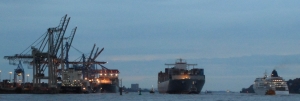
Chemistry disrupts ocean functions
“If you disturb the balance of the ocean too much, you disrupt the regulatory functions that the ocean provides, and that is dangerous in terms of the economic damage that humans will cause,” said Richard Damania, chief economist of the Sustainable Development Practice Group at the World Bank.
Chemical pollutants act in two dimensions, Professor Sunderland noted during the meeting in her keynote lecture. We already have highly polluted ecosystems that cause severe poisoning. This often happens near sources of pollution. One example is the phenomenon of algal blooms, which release extreme amounts of nutrients and kill entire fish populations by reducing oxygen levels. We observe this phenomenon in the Baltic Sea every summer.
Another threat is the increasing share of toxic substances that accumulate in the bodies of fish, animals and the human bloodstream. Even small amounts of some of these persistent chemicals have been linked to a variety of chronic health disorders.
– We don’t know how big the problem is and we don’t know the full scope of chemicals [collected by animals and humans – MG] – Damania said. “If you want to try to solve a problem, you have to know how big the problem is,” he additionally noted.
Panelists emphasized the importance of applying the precautionary principle to accelerate the scientific response to chemical pollutants. Climate change is a huge source of uncertainty, making the potential impact of pollution even more unclear as warmer ocean temperatures could trigger unprecedented chemical reactions.
“There is still scientific uncertainty about the impact of chemicals, and we need to consider these risks in the face of this uncertainty,” said Professor Yukari Takamura, Institute for Future Initiatives, University of Tokyo.
Integration of science, politicians and lawyers is needed
During the debate, it was called for a long-term rethinking of the way we design, produce and introduce chemicals used in large quantities into our lives. Scientists, engineers and educators must work together to support innovation in materials and processes that avoid persistent, bioaccumulative and toxic chemicals from the outset.
This is not only a problem of awareness and science, but also a challenge for lawyers and politicians. Consistent policy and appropriate regulations can discipline us and force us to limit the use of chemicals in everyday life. Research shows that the chemicals that make our lives so easier end up in the ocean and human bloodstream. Can we prevent this? The chances are rather slim.
Discussants noted that although developed countries such as Japan and the EU have some of the strictest chemical regulations, much chemical production has moved to developing countries. And there is often worse supervision over environmental protection, as we can see by looking at pictures from demolition shipyards.
There is also less transparency in procedures related to the use of chemicals in the production of industrial products and food. We saw this when importing agricultural products from Ukraine to the European market. We observe the transfer of production and pollution from richer to poorer countries in Asia, Africa and Latin America, as well as in Poland. Are we aware of this? Certainly yes. And we are defenseless. The effect of our global carelessness will be visible in the local dimension already in the summer. On our beaches.
